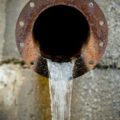
The notion that bottled mineral water is clean and without contamination is being challenged by new research that has identified significant levels of estrogen in bottled water that appears to have leached from the plastic bottle. Martin Wagner and Jörg Oehlmann, from the Department of Aquatic Ecotoxicology at the Goethe University in Frankfurt, Germany, make no bones about it, declaring that plastic mineral water bottles contaminate drinking water with xenoestrogens.
In their report on commercially available mineral waters, published in the journal Environmental Science and Pollution Research, the researchers explain how they analyzed 20 brands of mineral water available in Germany – nine bottled in glass, nine bottled in plastic and two bottled in composite packaging (paperboard boxes coated with an inner plastic film). They took water samples from the bottles and tested them for the presence of estrogenic chemicals in vitro and also carried out a reproduction test with the New Zealand mud snail to determine the source and potency of the xenoestrogens.
They detected estrogen contamination in 60 percent of the samples (12 of the 20 brands) analyzed. Mineral waters in glass bottles were less estrogenic than waters in plastic bottles. Specifically, 33 percent of all mineral waters bottled in glass compared with 78 percent of waters in plastic bottles and both waters bottled in composite packaging showed significant hormonal activity.
“We must have identified just the tip of the iceberg in that plastic packaging may be a major source of xenohormone contamination of many other edibles. Our findings provide an insight into the potential exposure to endocrine-disrupting chemicals due to unexpected sources of contamination,” the researchers warn.
Related:
California Mulls Estrogen-Plastic Ban
Plastic Bottles And Hot Liquids A Bad Combo
Fresh concerns about BPA
Hormones Gone Wild








Comments are closed.